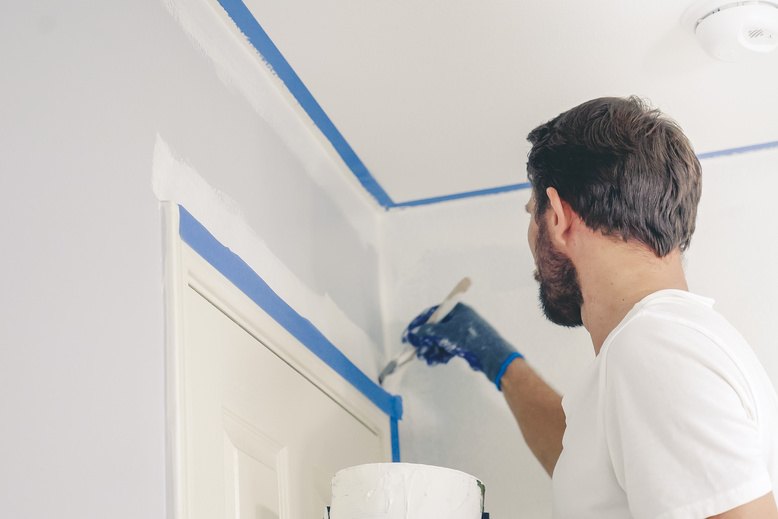Essential Guide on How to Paint 4 Tricky Areas Like a Pro
Painting is one of the quickest and most effective ways to breathe new life into a room. Whether it's a DIY project or professional work, painting is one of the simplest interior finishing jobs. However, there are some tricky areas that might need you to get more creative with your painting techniques in order to cover them.
Keep reading to discover a few simple tips and tricks on how to maneuver those tricky areas in order to get a flawless paint job without damaging your house or building fixtures.

Painting Above Windows and Doors
The most common painting method is using a paint roller. When working on areas above windows and doors, the width of the roller may make it difficult to cover the area with a simple vertical stroke. To cover this tricky area, use a trim roller of the same width as the unpainted space. Paint over the space in a horizontal stroke to get a consistent texture.
You can use this same technique for narrow spaces like corridor pillars, wall corners, and extensions.
Painting Behind Toilets
The space behind the toilet tank is usually too narrow for a trim roller or a paintbrush to fit. To paint the area, you need a paint-behind pad, also known as a flat painter. This special tool is a thin painting pad with a long handle that comes with a tray.
Pour some paint onto the tray, dip the paint pad in, and use it to paint behind the toilet tank. You can also use the paint pad tool to paint other hard-to-reach areas like behind radiators.
Painting Around Ceiling Lights
Ceiling lights and other mounted lighting fixtures are challenging to paint around. First, switch off the home's main electricity switch and unscrew the canopy. This is to protect you from possible electric shock from exposed electric wires. Cover the lighting fixture with a plastic sheet. With a trim roller or paintbrush, paint around the area, then proceed to paint the ceiling. Let the paint dry then fasten the fixtures.
Painting Along Carpeting
To avoid staining or soaking your carpet with paint, cover the entire carpeted area along the baseboard or skirting board with painter's tape. Stick the tape onto the carpet, overlapping on the skirting board about ⅓ to ¼ inch all through the carpet length. Using a paintbrush, paint along the baseboard and peel off the tape once the paint dries.
Contact Us for Professional Painting
We understand how difficult it is to paint those tricky areas, especially when you don't have the right tools. At Major Painting, we are committed to providing our clients with quality, lasting paint jobs. For more painting tips, or to learn more about our interior painting services for residential and commercial buildings, contact us today!
About the author
Chase DeRousse is the Vice President of Painting at Major Painting and strives to deliver quality craftsmanship coupled with superior customer service, creating a unique and pleasant experience for all Major Painting customers, no matter the size of the project. Chase also holds an active Class A General Contracting License.
Chase has won multiple accolades recognizing his leadership and excellence in the painting industry including awards from the Painting Contractor Association (PCA), Business Owners and Managers Association (BOMA), and Institute of Real Estate Management (IREM).